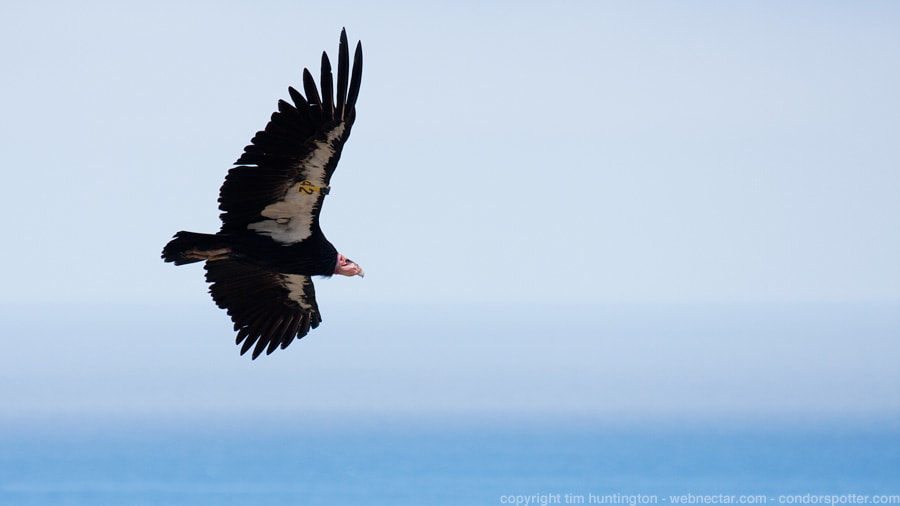Loading bio data
In-the-Red (242) was captured in the summer of 2007 for a routine check up and was found to have the highest lead level ever recorded in a living condor! Upon this discovery, he was immediately rushed to the Los Angeles Zoo, where he underwent intensive chelation treatment for two months. Despite his debilitating lead level and the stressful rehabilitation, he was re-released in Big Sur in the fall of that same year. Luckily for him, he did not appear to drop in the hierarchy, as was expected from such a long hiatus. However, he was a bit of a rogue and we're not sure how much of it was due to a drop in IQ, which is a frequent side effect from lead poisoning. Case in point: In-the-Red (242) did not perform the courtship display quite the same as other males after his brush with death - he only ended up pairing late in life, shortly before his death.
In 2011, In-the-Red (242) was once again treated for lead poisoning, although his lead levels were not as high as they were in 2007. Many condors endure lead exposures that would cripple or kill humans. Even worse, our data shows that condors are routinely exposed to lead, making it the largest obstacle for establishing a self-sustaining condor flock. While these exposures are sub-lethal most of the time, they have accumulative effects that can become deadly over time or can cause death secondarily through some other complication that might not otherwise affect a completely healthy bird.
In-the-Red (242)'s incredible tenacity for continually trying to perpetuate his species despite his handicap was an inspiration to us.
In 2011, In-the-Red (242) was once again treated for lead poisoning, although his lead levels were not as high as they were in 2007. Many condors endure lead exposures that would cripple or kill humans. Even worse, our data shows that condors are routinely exposed to lead, making it the largest obstacle for establishing a self-sustaining condor flock. While these exposures are sub-lethal most of the time, they have accumulative effects that can become deadly over time or can cause death secondarily through some other complication that might not otherwise affect a completely healthy bird.
In-the-Red (242)'s incredible tenacity for continually trying to perpetuate his species despite his handicap was an inspiration to us.







